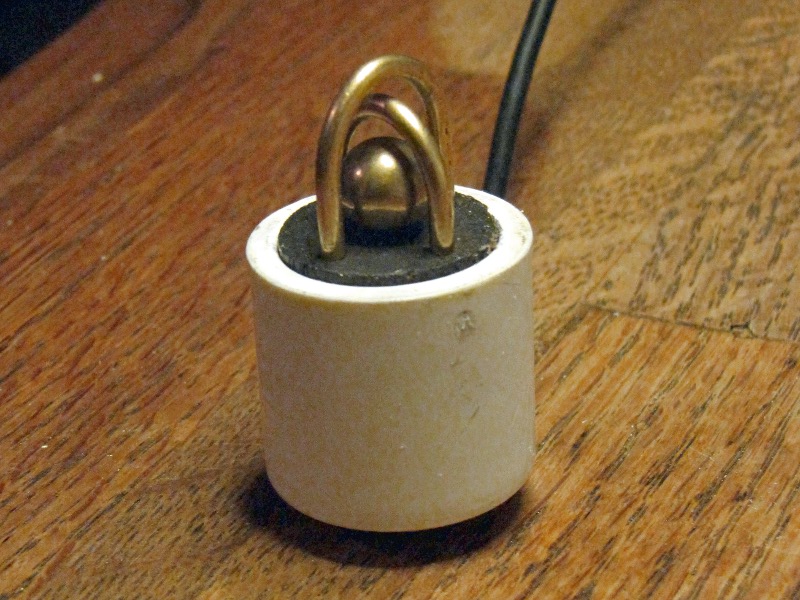First, install the “short” J in the wooden base. Make sure its longer leg is lined up with one of the holes that goes all the way through the dowel, and push it in. Its shorter leg goes in the “blind” hole on the opposite corner. Go ahead and push it in until it stops.
Now insert the longer leg of the “long” J into the other “through” hole. Leave the shorter leg clear of its hole, for now.
Drop the brass ball into the pocket formed by the three legs that are already inserted in the base.
Rotate the short leg of the long J into position and press it home into the remaining blind hole. This action secures the ball in place; it should not be able to escape from the cage thus formed.
Now is a good time to test the action of your switch. Make sure that the ball can be set in a “neutral” position resting in the center hole that doesn’t contact any of the bars. Also make sure that the circuit closes across the two legs extending through the base when the ball falls against the cage.


